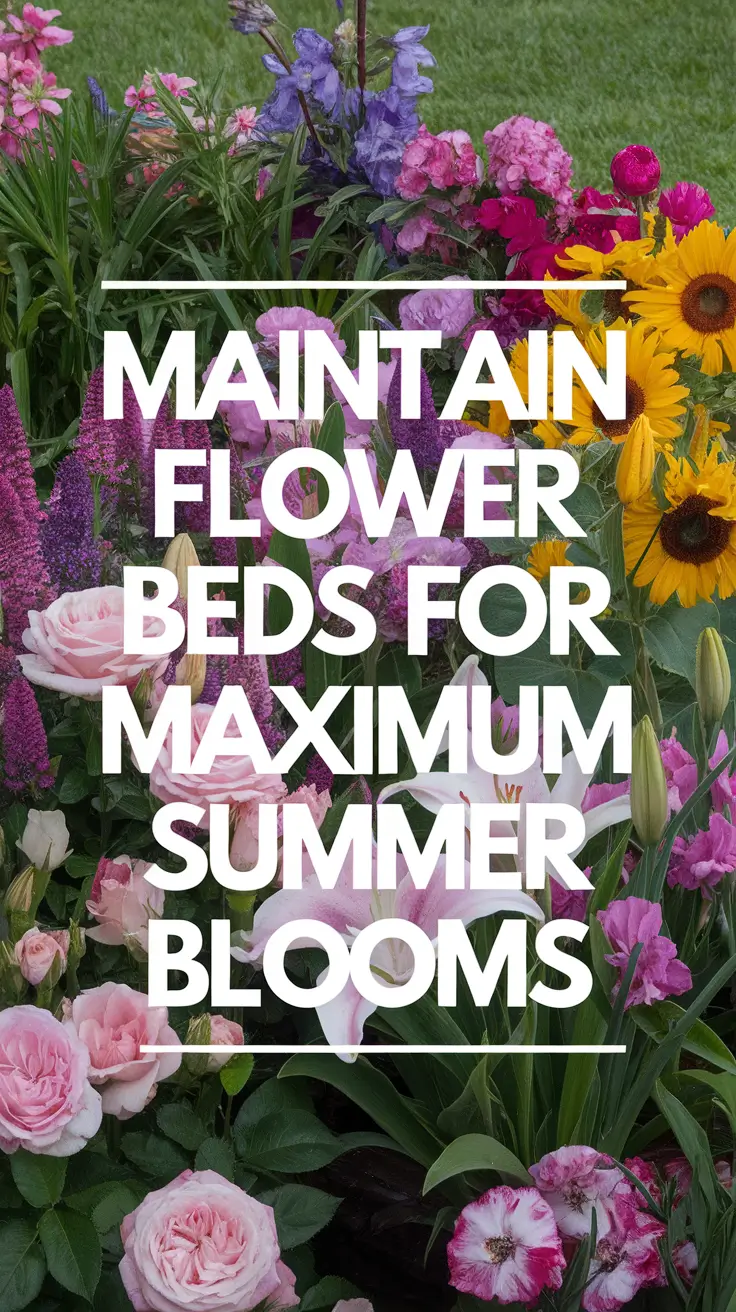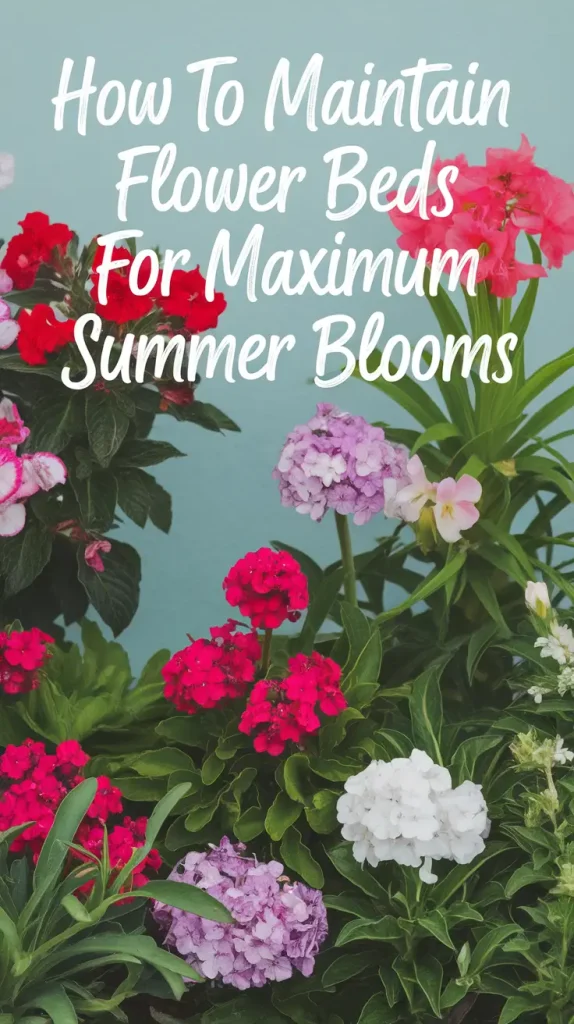How to Maintain Flower Beds for Stunning Summer Blooms in 2025

Have you ever caught yourself looking at your garden and wondering why it doesn’t pop like you imagined? I have too, and there’s this one experinece I would like to share. Often, I recall a summer when I dedicated my time and energy to planting and watering my garden, yet, all my efforts rendered were a patch of dried weeds instead of the lush and colorful paradise that I envisioned.
I could tell that I was putting effort so it wasn’t as if there was a shortage of effort. My flowers use to dim too quickly which made me wonder why. This is the moment I realized that maintaining flower beds is not only intricate usuing routine watering. It’s an always on system where there is sufficient rooted care that keeps them healthy and blooming through the entire season.
In this article, I would like to share my strategy around the maintenance of flower beds that restored my garden from lackluster to luscious. Irrespective of whether you are a novice in gardening or looking to perfect your technique, these pointers will aid in achieving enduring all summer long blooms.

Begin with a Careful Arrangement of Flower Beds
Design Your Area With Care
As I learned the hard way, a considerate arrangement can make all the difference in your flower beds. There was a time when I cared only for the aesthetics and chose to plant flowers where they “looked good” to me. I was shocked to see that some flowers flourished while others completely perished. Not every plant gets the same amount of sunlight or shade.
Here are my proven notes:
- Sun vs Shade: Mark out your garden areas with morning sun exposure and sections that are scorched in the afternoon. Some flowers bask in softness and some shine in stronger light.
- Tall vs Short: Taller plants should go towards the back so that shorter plants aren’t overshadowed.
- Color Coordination: Select colors that work well together. My favorite combination that balances the eye is the cool color lavender paired with bright yellow.
Strategically organizing your layout saves time and makes your flowerbed look visually pleasing while improving the growing conditions for each plant. Thus, every minute spent is certainly a gain.
Preparing the Soil: The Beginning of Healthy Blooms
3 Steps to Prepare Bloom-Ready Soil
Like many people, the first time I tried to garden I completely ignored the preparation work required for the soil. My thinking was “Dirt is dirt, right?” The answer is no. Healthy soil is the background of blooming flower beds.hangements, nourishing soil greatly enhances plant health.
Here is my easy 3-step procedure:
- Clear the Space: Remove weeds, old roots, and debris. This ensures that your plants won’t compete for nutrients.
- Enrich the Soil: I mix in organic compost to boost nutrient content. It’s like giving your plants a vitamin boost.
- Test and Adjust: Use a soil test kit to check pH levels. Most flowering plants prefer slightly acidic to neutral soil (pH 6.0–7.0). Adjust accordingly with lime or sulfur.
In my garden, the application of these steps transformed everything. My flowers are blooming more than they have previously and they are looking much healthier.

Watering Treatments
Basic Criteria: Over and under watering
Using a watering system myself, I thought setting one up would water them correctly, however, I quickly learned that the opposite side of thought style does work for plants.
Here’s what really works:
- Morning Watering: It minimizes the chances of contracting mold and permits the plants to soak up moisture for a whole day.
- Deep, Infrequent Watering: Go for deep watering every few days instead of daily, shallow sprinkles. This helps in root growth.
- Mulch Magic: Putting a layer of bark mulch helps to conserve moisture while also stabilizing the temperature of the soil. Also, straw and compost work equally well.
Using these techniques, I have fewer wilted leaves, and the duration of blooms is longer and more enduring. Sometimes, less really is more.
Feeding Your Flowers For Optimal Blooming
The Ultimate Bloom-Boosting Feeding Schedule
| Stage | Fertilizer Type | Frequency |
|---|---|---|
| Pre-bloom | Balanced (10-10-10) | Every 4 weeks |
| Mid-Bloom | Phosphorus-Rich (5-10-5) | Every 2 weeks |
| Late Bloom | Potassium Boost (0-0-10) | Once a month |
I learned feeding flowers does not mean slathering them with any type of fertilizer. Each stage of growth has specific requirements. Pre-bloom requires a balanced boost; during bloom, phosphorus enhances color and longevity. As summer ends, potassium strengthens the plants for the next seasonal round.
It ensures my flower beds remain vibrant and active while also preventing nutrient burnout.
Resolving Issues with Flower Beds
Dealing With Unmet Expectations
Even when I put in the right amount of work and timing, my flower beds did not perform to expectation and I definitely had a problem to solve there. Acheiving getting something was simple with determination and simple realization of what worked and what didn’t.
This is how I handle the most common challenges:
- Wilting: Look for root rot due to overwatering. Cut back on watering and improve drainage.
- Faded Blooms: Usually points towards lack of phosphorus. Phosphorus can be easily increased and can restore color pretty quickly.
- Pest Damage: For flowers, I use neem oil since it’s safe and its pest resistant to aphids and mites.
- Fungal Issues: Do not overhead water, only base water. Thin foliage to allow air flow resulting in circulation for better ventilation.
I refine the above process and my garden became more beautiful on a regular basis and fixed the term of ‘trial and errors’.
Flower Beds and The Weather
Preventing Seasonal Changes From Affecting Bloom Appearance
Predictable weather is not an option anytime soon and bloom expects finer weather and the same sunshine.
My best tips:
- Shade cloth: Protects delicate flowers during extreme heat.
- Wind barriers: Tall grasses or hedges can protect your beds from harsh winds.
- Drainage solutions: During heavy rainfall, gently raking the soil helps aerate and prevents root suffocation.
Thinking ahead has saved my garden more times than I can count.
Conclusion
Gardening is all about balancing patience and persistence. While tending to flower beds may seem overwhelming, finding a rhythm makes it effortless. Start with solid planning, nurture the soil, water wisely, and proactively feed and troubleshoot issues as they arise.
Gardening is a journey. Every season brings invaluable lessons and each bloom is a pint-sized triumph.
What are your thoughts? You can save your flower beds on Pinterest and let them thrive throughout the summer. Also, don’t forget to share your stories in the comments. I’d love to read about your gardening wins!

